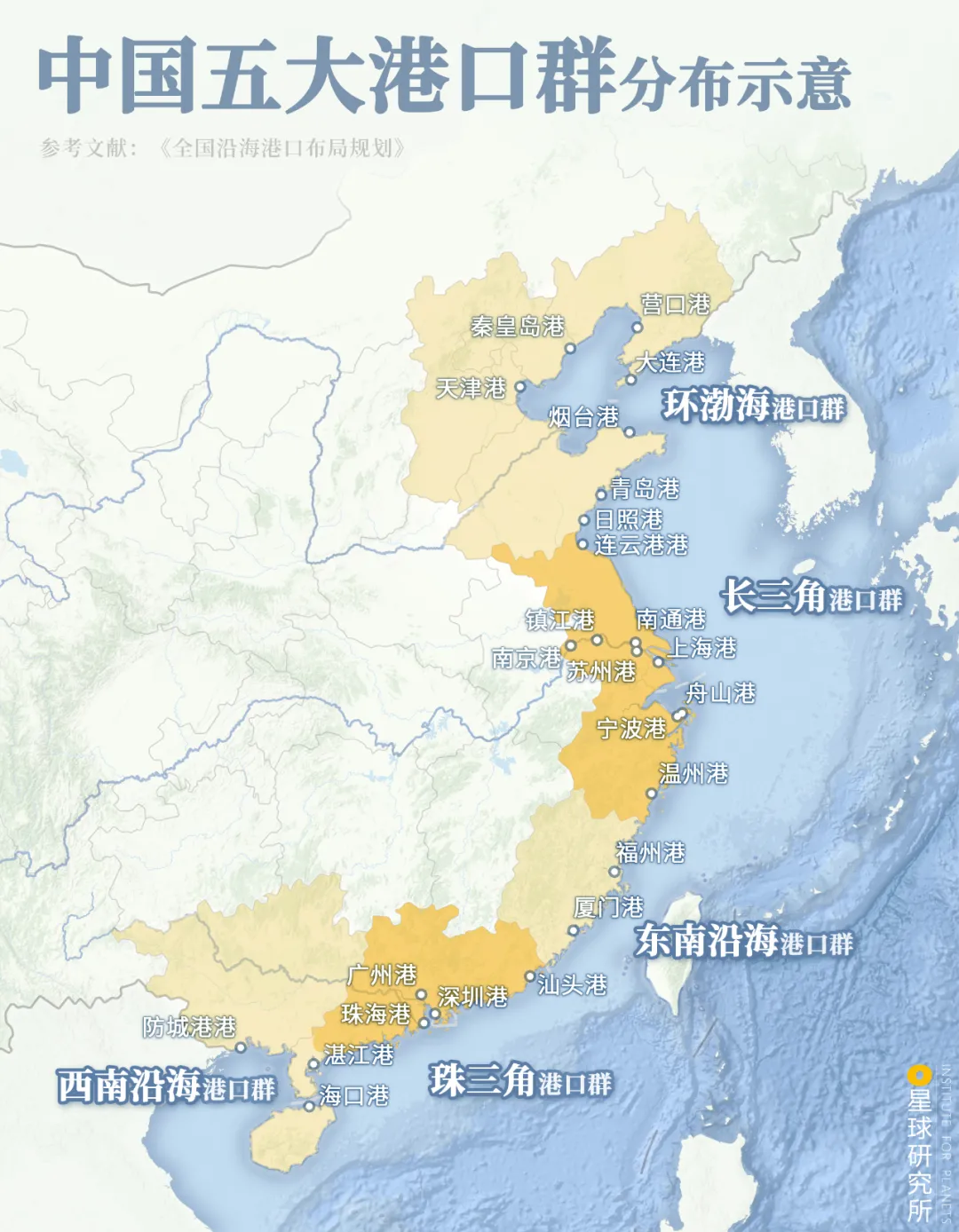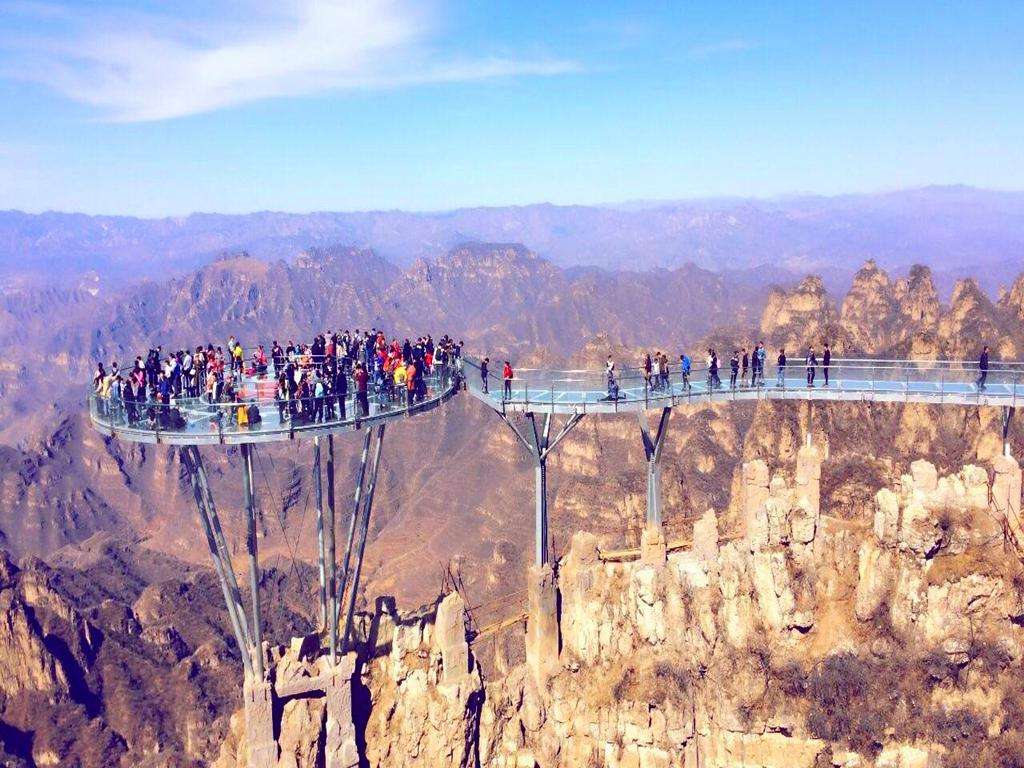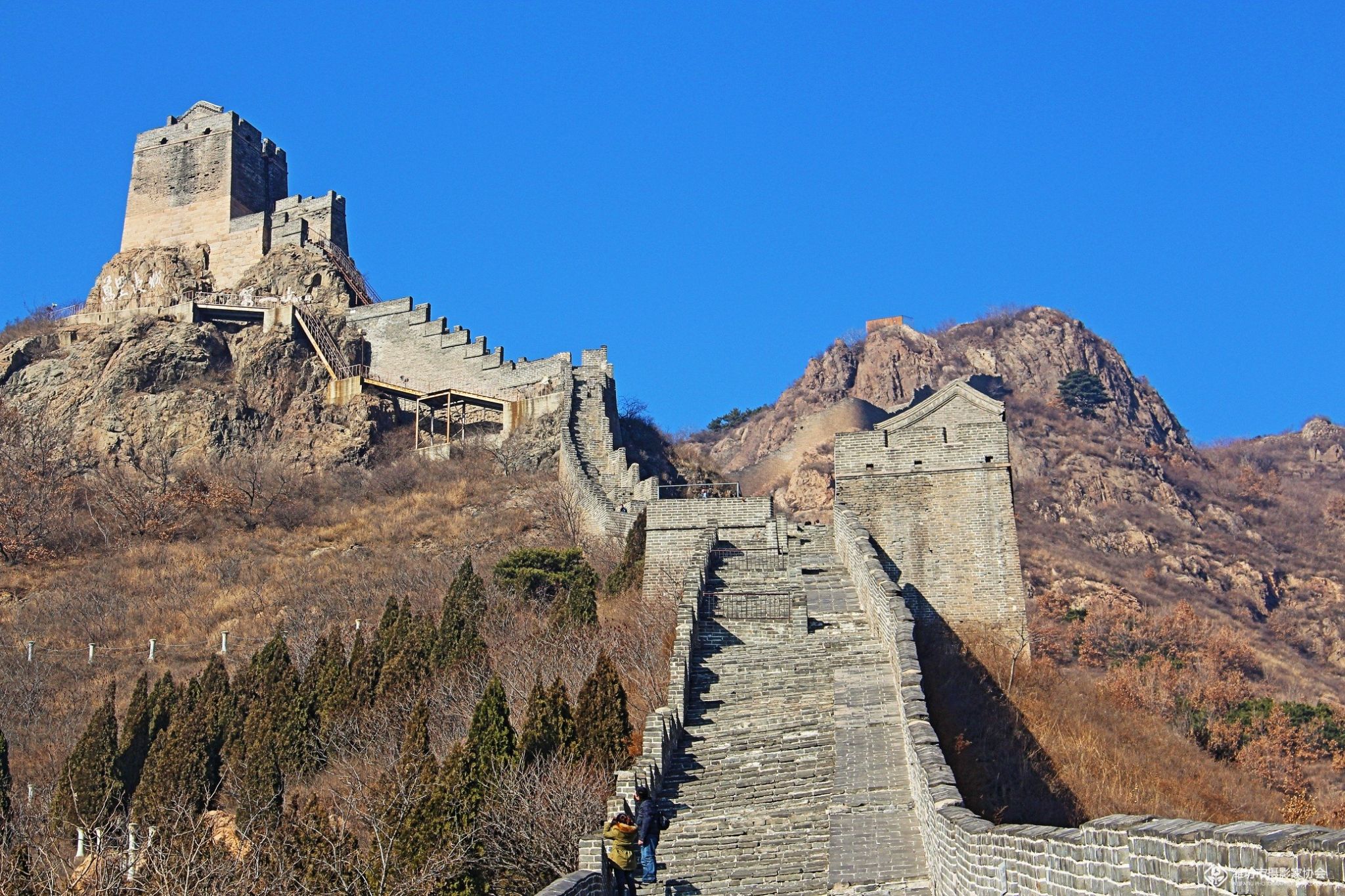
Deutsch-Chinesische Enzyklopädie, 德汉百科
 Hebei Sheng-HE
Hebei Sheng-HE



Der Flughafen Peking-Daxing (IATA-Code und ICAO-Code sind noch offen) ist ein chinesisches Infrastrukturprojekt. In Ergänzung zum bisherigen Flughafen Peking im Norden der Stadt, der an seine Grenzen stößt, soll ein weiterer Flughafen im Süden der Hauptstadt Peking entstehen.
Der bisherige Flughafen Pekings war drei Jahre in Folge der Flughafen mit den zweitmeisten Passagieren weltweit nach dem Flughafen Atlanta und erreicht seine Kapazitätsgrenze. Im Süden der Hauptstadt befindet sich bereits heute der Flughafen Peking-Nanyuan, der lediglich über eine Startbahn verfügt.
Die Genehmigung wurde im Januar 2013 erteilt; die Baumaßnahmen sollen 2014 unter Leitung der ADPI beginnen; er soll bereits 2018[1] eröffnet werden.
Laut Internetseite des Flughafenplaners Netherlands Airport Consultants B.V. (NACO) wird der neue Großflughafen über insgesamt acht Start- und Landebahnen verfügen, von denen eine für rein militärische Zwecke reserviert ist. Für die erste Ausbaustufe, die eine Kapazität von 45 Millionen Fluggästen haben wird, sind vier Start- und Landebahnen geplant. Damit sollen bis zu 650.000 Flugbewegungen pro Jahr abgewickelt werden können.[2]
In der letzten Ausbaustufe soll der Flughafen sieben Landebahnen haben[3] und für bis zu 130 Millionen Passagiere ausgelegt sein. Er hätte damit eine Startbahn mehr als der Flughafen Denver, der über sechs Bahnen verfügt. 2011 sprach man sogar von neun Landebahnen.[4]
Der Flughafen Peking-Daxing soll ausschließlich von der Allianz SkyTeam genutzt werden, der gleich drei chinesische Fluggesellschaften angehören. Die Maschinen der Star Alliance, der auch Lufthansa angehört, sollen weiterhin den bisherigen Flughafen Peking anfliegen.[2] Hierdurch entstehen zwei vollwertige Hubs in Peking, statt z. B. den Inlands- und Auslandsverkehr auf zwei Flughäfen aufzuspalten.

 Fujian Sheng-FJ
Fujian Sheng-FJ
 Guangdong Sheng-GD
Guangdong Sheng-GD
 Guangxi Zhuangzu Zizhiqu-GX
Guangxi Zhuangzu Zizhiqu-GX
 Hainan Sheng-HI
Hainan Sheng-HI
 Hebei Sheng-HE
Hebei Sheng-HE
 Jiangsu Sheng-JS
Jiangsu Sheng-JS
 Liaoning Sheng-LN
Liaoning Sheng-LN
 Shandong Sheng-SD
Shandong Sheng-SD
 Shanghai Shi-SH
Shanghai Shi-SH
 Tianjin Shi-TJ
Tianjin Shi-TJ
 Zhejiang Sheng-ZJ
Zhejiang Sheng-ZJ






 Automobile
Automobile
 Haval
Haval



 Automobile
Automobile
 China
China
 Chinesiches Automobil
Chinesiches Automobil
 Neue Energiefahrzeuge/New Energy Vehicles
Neue Energiefahrzeuge/New Energy Vehicles
 Hebei Sheng-HE
Hebei Sheng-HE
 privat betriebene Unternehmen
privat betriebene Unternehmen

 Companies
Companies



 Architecture
Architecture
 Beijing Shi-BJ
Beijing Shi-BJ
 China
China
 Chinesische Mauer
Chinesische Mauer
 Gansu Sheng-GS
Gansu Sheng-GS
 Hebei Sheng-HE
Hebei Sheng-HE
 Heilongjiang Sheng-HL
Heilongjiang Sheng-HL
 Henan Sheng-HA
Henan Sheng-HA
 Jilin Sheng-JL
Jilin Sheng-JL
 Liaoning Sheng-LN
Liaoning Sheng-LN
 Nei Mongol Zizhiqu-NM
Nei Mongol Zizhiqu-NM
 Ningxia Huizu Zizhiqu-NX
Ningxia Huizu Zizhiqu-NX
 Qinghai Sheng-QH
Qinghai Sheng-QH
 Shaanxi Sheng-SN
Shaanxi Sheng-SN
 Shandong Sheng-SD
Shandong Sheng-SD
 Shanxi Sheng-SX
Shanxi Sheng-SX
 Tianjin Shi-TJ
Tianjin Shi-TJ

 World Heritage
World Heritage
 Xinjiang Uygur Zizhiqu-XJ
Xinjiang Uygur Zizhiqu-XJ

 Civilization
Civilization






长城(Great Wall),又称万里长城,是中国古代的军事防御工程,是一道高大、坚固而连绵不断的长垣,用以限隔敌骑的行动。长城不是一道单纯孤立的城墙,而是以城墙为主体,同大量的城、障、亭、标相结合的防御体系。
长城修筑的历史可上溯到西周时期,发生在首都镐京(今陕西西安)的著名的典故“烽火戏诸侯”就源于此。春秋战国时期列国争霸,互相防守,长城修筑进入第一个高潮,但此时修筑的长度都比较短。秦灭六国统一天下后,秦始皇连接和修缮战国长城,始有万里长城之称 。明朝是最后一个大修长城的朝代,今天人们所看到的长城多是此时修筑。
长城资源主要分布在河北、北京、天津、山西、陕西、甘肃、内蒙古、黑龙江、吉林、辽宁、山东、河南、青海、宁夏、新疆等15个省区市。期中陕西省是中国长城资源最为丰富的省份,境内长城长度达1838千米 。根据文物和测绘部门的全国性长城资源调查结果,明长城总长度为8851.8千米,秦汉及早期长城超过1万千米,总长超过2.1万千米。
1961年3月4日,长城被国务院公布为第一批全国重点文物保护单位 。1987年12月,长城被列入世界文化遗产。
长城(蒙古语:ᠴᠠᠭᠠᠨ
ᠬᠡᠷᠡᠮ,西里尔字母:Цагаан хэрэм;满语:ᡧᠠᠩᡤᡳᠶᠠᠨ
ᠵᠠᠰᡝ,穆麟德转写:šanggiyan jase),是中国古代为抵御不同时期塞北游牧帝国或部落联盟的侵袭,在西北方所修筑规模浩大的隔离墙或军事工程的统称。长城虽为城墙,但不做为完全单一条绝对隔离线,而是多层检查通行的边防口,实际上还主动发挥指导经贸交流的两手策略[1][2],东西段与前后关卡加总起来可绵延上万华里(约4500-6000千公尺),因此又称作万里长城。
现存的长城遗迹主要为始建于14世纪的明长城,西起嘉峪关,东至虎山长城,长城遗址跨越吉林、辽宁、北京、天津、山西、陕西、宁夏、甘肃等15个省市自治区,总计有43,721处长城遗产,长城也是自人类文明以来最巨大的建筑物。1961年起,一批长城重要点段被陆续公布为全国重点文物保护单位。1987年,长城被联合国教科文组织列为世界文化遗产,该遗产目前不仅包含上述15个省、市、自治区境内的长城,还额外包括了湖南和四川境内的苗疆长城(南长城)等[3]。
Die Chinesische Mauer ist eine Schutzanlage zur Grenzsicherung, die während der Ming-Dynastie (1368–1644) im Norden Chinas errichtet wurde.[1][2] Der chinesische Ausdruck ist 萬里長城 / 万里长城, Wànlǐ Chángchéng – „10.000-Li-Mauer, besser: zehntausende Li lange (Schutz-)Mauer“ oder kurz 長城 / 长城, Chángchéng, Jyutping Coeng4sing4anhören (kantonesisch)ⓘ/? – „Lange Mauer“, auch mit „Große Mauer“ (vgl. Englisch: „Great Wall“) übersetzt.
Die Anlage ist in Abschnitten zu unterschiedlichen Zeiten mit unterschiedlichen Bautechniken in der Ming-Dynastie gebaut worden.[3][4] Breite, begehbare Mauern im Norden Pekings aus der zweiten Hälfte des 16. Jahrhunderts bilden das ikonische Bild der Chinesischen Mauer und sind zu einem Sinnbild Chinas geworden. In anderen Abschnitten, besonders im Westen, ist die Befestigung oftmals aus festgeklopftem Lehm erbaut worden.[2] Die Länge der Schutzanlage wird mit 6260 Kilometern angegeben.[5]
万里の長城(ばんりのちょうじょう、中国語: 万里长城、拼音: Wànlǐ Chángchéng ワンリー ツァンツェン、モンゴル語: Цагаан хэрэм、ᠴᠠᠭᠠᠨ
ᠬᠡᠷᠡᠮ、満州語: ᡧᠠᠩᡤᡞᠶᠠᠨ
ᠵᠠᠰᡝ[1]、šanggiyan jase)は、中華人民共和国に存在する城壁の遺跡である。ユネスコの世界遺産(文化遺産)に登録されており、2007年には新・世界七不思議にも選ばれている[2]。中国には他にも長く連なった城壁、いわゆる長城は存在するが、万里の長城が規模的にも歴史的にも圧倒的に巨大なため、単に長城と言えば万里の長城のことを指す。現存する人工壁の延長は6,259.6kmである[3]。
匈奴のような北方の異民族が侵攻してくるのを迎撃するために、秦代の紀元前214年に始皇帝によって建設された。長城は始皇帝によって建設されたと一般には考えられているが、実際にはその後いくつかの王朝によって修築と移転が繰り返され、現存の「万里の長城」の大部分は明代に作られたものである。この現存する明代の長城線は秦代に比べて遥かに南へ後退している。
よく「農耕民族と遊牧民族の境界線」と言われるが、秦・漢代の長城は草原の中に建っているところが多い。これは両王朝が遊牧民族に対し優位に立ち、勢力圏を可能な限り北方へと広げようとしたためである。それに対し明代の長城は防衛を容易にするために中国本土に近いところに建設されており、とくに首都北京付近においてその傾向が強く、北京付近の長城は北京から100kmも離れていない稜線上に設けられている。万里の長城は南北両勢力の境界線として機能したが、北方の遊牧民族も南方の農耕民族もお互いの物産を必要としており、長城沿いには交易所がいくつも設けられ、盛んに取引が行われていた。交易はいつもうまくいっていたわけではなく、北方民族側の思うとおりにいかない場合もあった。その交易を有利にするための威嚇として、明の力が弱い時期に北方民族は長城を越えて侵入を繰り返していた。また、長城は観念上においても両勢力の境界線として機能し、たとえば中原の諸王朝が北方遊牧民族を指す場合、「塞外」(塞は城塞の意味で、この場合万里の長城を指す)という言葉が用いられることも多かった。
万里の長城は建設後常に維持・利用されていたわけではなく、積極的に長城を建設・維持する王朝と、まったく長城防衛を行わない王朝の2種が存在し、各王朝の防衛戦略によって長城の位置も大きく変動している。始皇帝による建設以後においては、秦・前漢・北魏・北斉・隋・金・明は大規模な長城建設を行ったのに対し、後漢・魏・晋・五胡十六国の諸王朝・唐・五代の各王朝・宋・元・清は長城防衛をほとんど、あるいはまったく行わなかった。長城の建設位置に関しても、秦・前漢・金は中原から遠く離れた草原地帯に長城を建設したのに対し、北魏・北斉・明は中原に近い山岳地帯を中心に長城を建設した。
なお、「宇宙から肉眼で見える唯一の建造物」と言われ、中華人民共和国の教科書にも掲載されていたが、実際には幅が細い上、周囲の色と区別が付きにくいため、視認することは出来ない。2003年に中国初の有人宇宙船「神舟5号」に搭乗した宇宙飛行士である楊利偉が、「万里の長城は見えなかった」と証言したため、中華人民共和国の教科書から、この節は正式に削除された[4]。2004年には、中国系アメリカ人の宇宙飛行士であるリロイ・チャオが、国際宇宙ステーション(ISS)より180ミリ望遠レンズを付けたデジタルカメラで「万里の長城」を写真撮影することに成功したが、肉眼では見えなかったと証言している[5]。
The Great Wall of China is a series of fortifications made of stone, brick, tamped earth, wood, and other materials, generally built along an east-to-west line across the historical northern borders of China to protect the Chinese states and empires against the raids and invasions of the various nomadic groups of the Eurasian Steppe with an eye to expansion. Several walls were being built as early as the 7th century BC;[2] these, later joined together and made bigger and stronger, are collectively referred to as the Great Wall.[3] Especially famous is the wall built in 220–206 BC by Qin Shi Huang, the first Emperor of China. Little of that wall remains. The Great Wall has been rebuilt, maintained, and enhanced over various dynasties; the majority of the existing wall is from the Ming Dynasty (1368–1644).
Apart from defense, other purposes of the Great Wall have included border controls, allowing the imposition of duties on goods transported along the Silk Road, regulation or encouragement of trade and the control of immigration and emigration. Furthermore, the defensive characteristics of the Great Wall were enhanced by the construction of watch towers, troop barracks, garrison stations, signaling capabilities through the means of smoke or fire, and the fact that the path of the Great Wall also served as a transportation corridor.
The frontier walls built by different dynasties have multiple courses. Collectively, they stretch from Dandong in the east to Lop Lake in the west, from present-day Sino-Russian border in the north to Qinghai in the south; along an arc that roughly delineates the edge of Mongolian steppe. A comprehensive archaeological survey, using advanced technologies, has concluded that the walls built by the Ming dynasty measure 8,850 km (5,500 mi).[4] This is made up of 6,259 km (3,889 mi) sections of actual wall, 359 km (223 mi) of trenches and 2,232 km (1,387 mi) of natural defensive barriers such as hills and rivers.[4] Another archaeological survey found that the entire wall with all of its branches measures out to be 21,196 km (13,171 mi).[5] Today, the Great Wall is generally recognized as one of the most impressive architectural feats in history.[6]
La Grande Muraille1 (chinois simplifié : 长城 ; chinois traditionnel : 長城 ; pinyin : Chángchéng ; Wade : Ch'ang²ch'eng² ; littéralement « la longue muraille »), aussi appelé « Les Grandes Murailles » est un ensemble de fortifications militaires chinoises construites, détruites et reconstruites en plusieurs fois et à plusieurs endroits entre le IIIe siècle av. J.-C. et le XVIIe siècle pour marquer et défendre la frontière nord de la Chine. C'est la structure architecturale la plus importante jamais construite par l’Homme à la fois en longueur, en surface et en masse.
Populairement, on désigne sous le nom de « Grande Muraille » la partie construite durant la dynastie Ming qui part de Shanhaiguan sur le territoire de la ville de Qinhuangdao dans la province du Hebei à l’est pour arriver à Jiayuguan dans la province du Gansu à l’ouest. Sa longueur varie selon les sources. Selon un rapport de 1990, la longueur totale des murs serait de 6 259,6 km2. En raison de sa longueur, elle est surnommée en chinois « La longue muraille de dix mille li » (chinois simplifié : 万里长城 ; chinois traditionnel : 萬里長城 ; pinyin : Wànlǐ Chángchéng ; Wade : Wan⁴li³ Ch'ang²ch'eng²), le li étant une ancienne unité de longueur chinoise et dix mille symbolisant l’infini en chinois. Ce surnom peut cependant être pris dans son sens littéral par approximation, 6 700 km faisant 11 632 li dans sa valeur généralement considérée de 576 m ou 13 400 li dans sa valeur actuelle d’exactement 500 m. En moyenne, la muraille mesure 6 à 7 m de hauteur, et 4 à 5 m de largeur. En avril 2009, l'Administration d'État chargée du patrimoine culturel, ayant utilisé des technologies de mesure plus récentes3, révise cette mesure et déclare une longueur de 8 851,8 km dont 6 259,6 km de murs, 359,7 km de tranchées et 2 232,5 km de barrières naturelles, telles des montagnes ou des rivières. Le même service a publié en juin 2012 une mise à jour de son étude, et estime désormais à 21 196,18 km la longueur totale de la Grande Muraille4,5. Cette nouvelle estimation prend en compte des parties actuellement détruites.
Depuis 1987, la Grande Muraille est classée au patrimoine mondial de l'UNESCO sous le numéro 4386. En 2015, le constat est fait d'une nette dégradation de l'état général de la Grande Muraille due principalement aux conditions climatiques et aux activités humaines, et de la nécessité d'intervenir rapidement pour assurer sa sauvegarde7.
La Grande Muraglia (長城T, 长城S, ChángchéngP), nata come Wanli changcheng (萬里長城T, 万里长城S, Wànlǐ ChángchéngP, Grande muraglia di 10.000 Lǐ[1]), consiste in una lunghissima serie di mura situate nell'odierna Cina.
Costruita a partire dal 215 a.C. circa per volere dell'imperatore Qin Shi Huang (秦始皇S, Qín Shǐ HuángP, Ch'in Shih-huangW, letteralmente "Primo Imperatore della dinastia Qin") - lo stesso a cui si deve il cosiddetto Esercito di terracotta di Xi'an - la sua lunghezza è stata considerata, fino a poco tempo fa, di 6.350 chilometri con altezze variabili.
Dalle misurazioni effettuate nel 2009 con più recenti strumentazioni tecnologiche (raggi infrarossi, GPS), la Grande Muraglia risulterebbe lunga 8.850 chilometri, circa 2.500 in più di quelli stimati[2] (di cui circa 350 km di trincee e circa 2250 km di difese naturali).
È stata dichiarata dall'UNESCO patrimonio dell'umanità nel 1987 e inserita nel 2007 fra le sette meraviglie del mondo moderno.
La Gran Muralla (en el idioma original 长城, changcheng) es una antigua fortificación china construida y reconstruida entre el siglo V a. C. y el siglo XVI (Edad Moderna) para proteger la frontera norte del Imperio chino durante las sucesivas dinastías imperiales de los ataques de los nómadas xiongnu de Mongolia y Manchuria.
Contando sus ramificaciones y construcciones secundarias, se calcula que tiene sobre unos 21 200 kilómetros de largo,1 desde la frontera con Corea, al borde del río Yalu, hasta el desierto de Gobi, a lo largo de un arco que delinea aproximadamente el borde sur de Mongolia Interior, aunque hoy solo se conserva un 30 % de ella.2En promedio, mide de 6 a 7 metros de alto y de 4 a 5 metros de ancho.
La muralla fue designada Patrimonio de la Humanidad por la Unesco en 1987.3
El 26 de enero de 2007 se dio a conocer que la muralla china fue elegida como una de las ganadoras en la lista de Las Nuevas Siete Maravillas del Mundo Moderno.[cita requerida]
La Gran Muralla está hermanada con la muralla romana de Lugo, Galicia (España), también designada Patrimonio de la Humanidad.
Великая Китайская стена (кит. трад. 長城, упр. 长城, пиньинь: Chángchéng, буквально: «Длинная стена» или кит. трад. 萬里長城, упр. 万里长城, пиньинь: Wànlǐ Chángchéng, буквально: «Длинная стена в 10 000 ли») — разделительная стена длиной почти 9000 км (полная длина 21,2 тыс. км), построенная в древнем Китае. Крупнейший памятник архитектуры.
Проходит по северному Китаю на протяжении 8851,9 км[2][3], а на участке Бадалин проходит в непосредственной близости от Пекина (это длина последнего сооружения эпохи Минской династии, причём сюда входят 6259 км собственно стен, 359 км рвов, 2232 км естественных защитных рубежей в виде холмов и рек).
Длина стены со всеми ответвлениями составляет 21 196 километров[4].
Толщина Великой стены в основном около 5-8 метров, а высота чаще всего около 6-7 метров (на некоторых участках высота достигает 10 метров)[источник не указан 681 день].
Стена идёт вдоль горной цепи Иньшань, огибая все отроги, преодолевая как высокие подъёмы, так и весьма значительные ущелья.
На протяжении многих столетий, стена меняла названия. Изначально называлась «Барьером», «Разгулом» или «Крепостью», позднее стена обрела более поэтичные названия, такие, как «Пурпурная граница» и «Земля драконов». Только в конце XIX века она получила название, которое известно нам и по сей день.

 Transport and traffic
Transport and traffic
 Geography
Geography
 Ski vacation
Ski vacation
 Sport
Sport
 History
History
 Eat and Drink
Eat and Drink